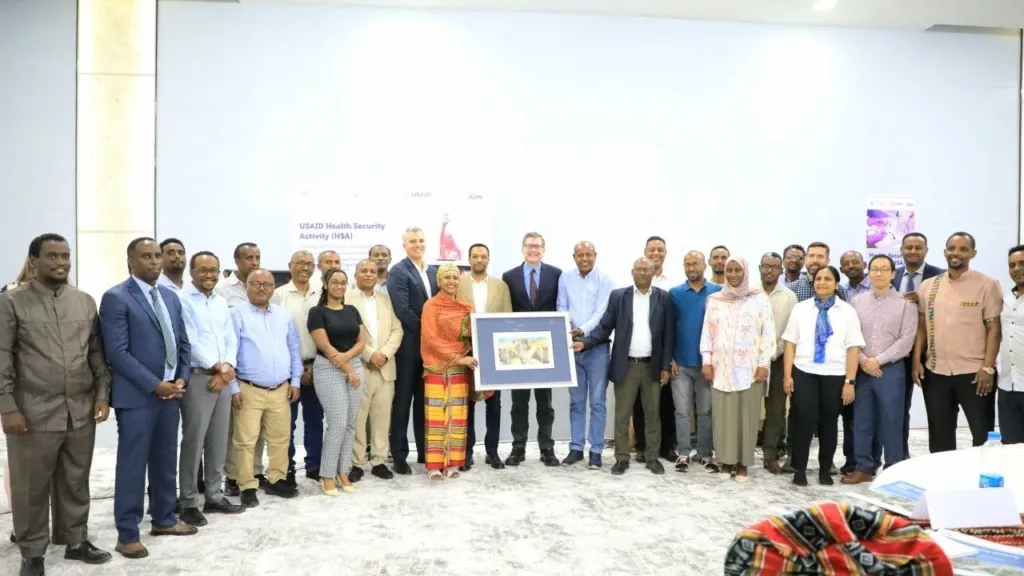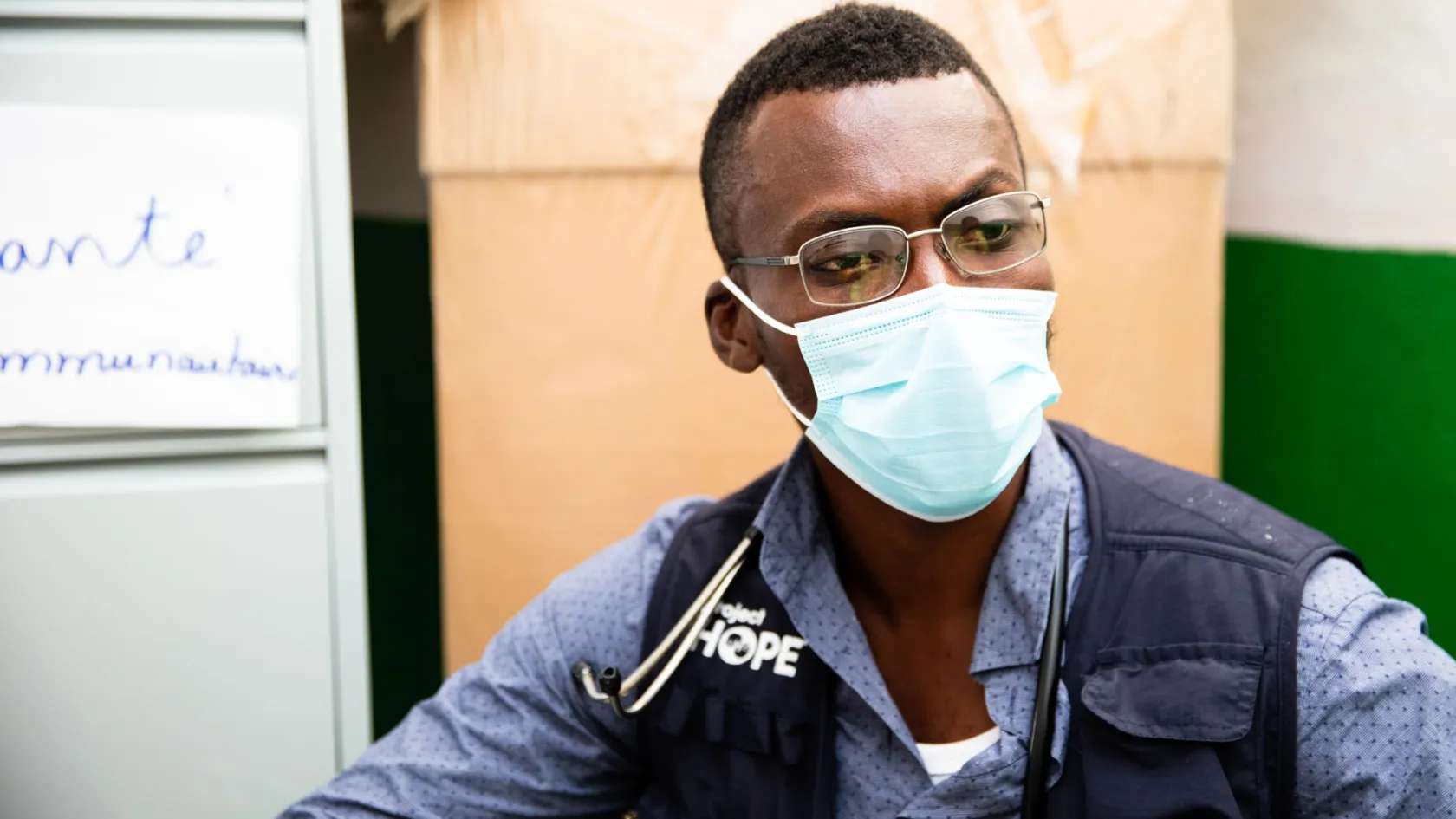On the Ground Update: Sierra Leone
As the country recovers from natural disasters, health crises and political instability, challenges continue
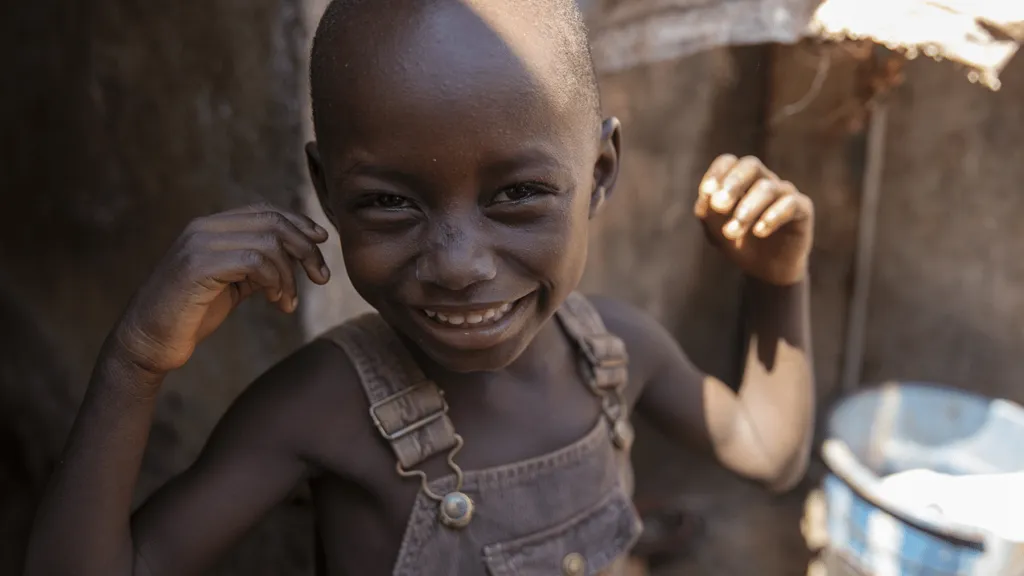
Wendy Kedzierski, Project HOPE’s senior communications manager, shares her perspective/observations from a recent visit to Project HOPE in Sierra Leone.
Project HOPE began working in Sierra Leone in 2014 to help contain the Ebola outbreak in response to a call for assistance from the country’s government. We recognized a pressing need for maternal, neonatal and child health programs there – Sierra Leone has the highest maternal mortality rate in the world and one of the highest infant mortality rates. Wendy Kedzierski, Project HOPE’s senior communications manager, reports on her recent visit.
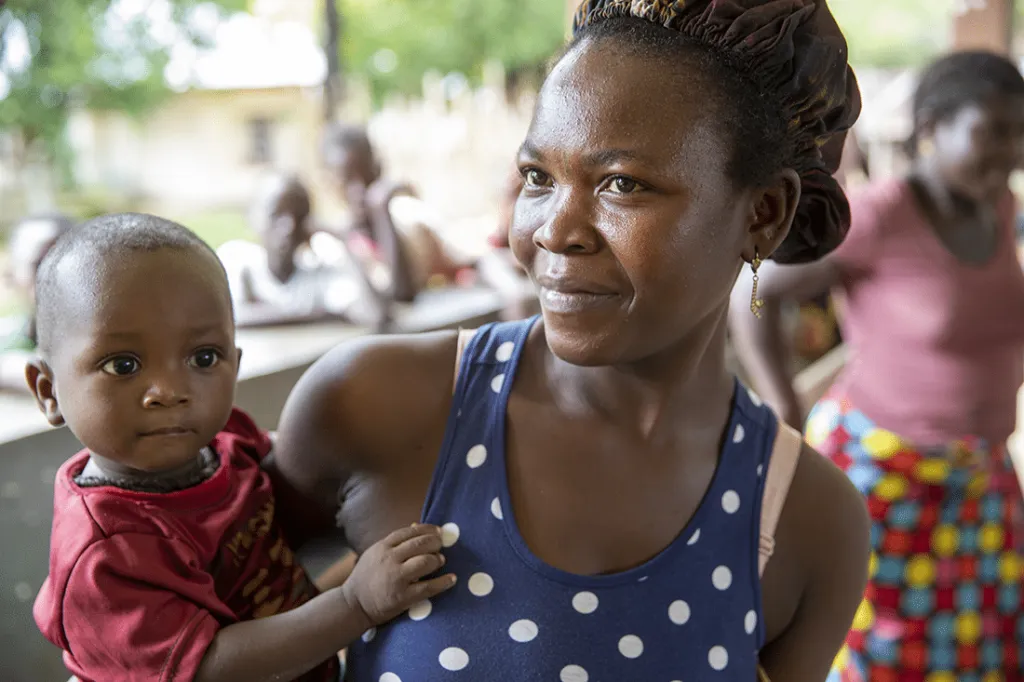
Sierra Leone is full of natural beauty: rainforests, beaches, mountains. Its people are kind and welcoming. Its land is mineral-rich and is particularly known for its diamonds – the most precious and toughest mineral on the one-through-10 rating of the Mohs hardness scale, which begins at one for talc (the softest) and ends with the diamond (the toughest) at 10.
It seems fitting that this country is known for diamonds, as I found the people of Sierra Leone to be like diamonds themselves. They are strong. They are resilient. They are beautiful.
I didn’t hesitate when asked to go as part of my job with Project HOPE’s communications team, but that didn’t mean I was without concerns. Most of my concerns were minor and comfort-related: hours upon hours cooped up in a plane; the question of accommodations and food.
But there was also a bit of a safety concern. The photographer, James Buck, and I traveled in June, at the beginning of the rainy season – which typically starts in May and ends in October. In 2017, Sierra Leone experienced a particularly wet rainy season leading to mudslides that killed more than 400 people. We saw one of the hillsides that collapsed – it still looks like a frozen waterfall of red mud.
Fortunately, the weather was mild – no natural disasters – and the accommodations and food were fine.
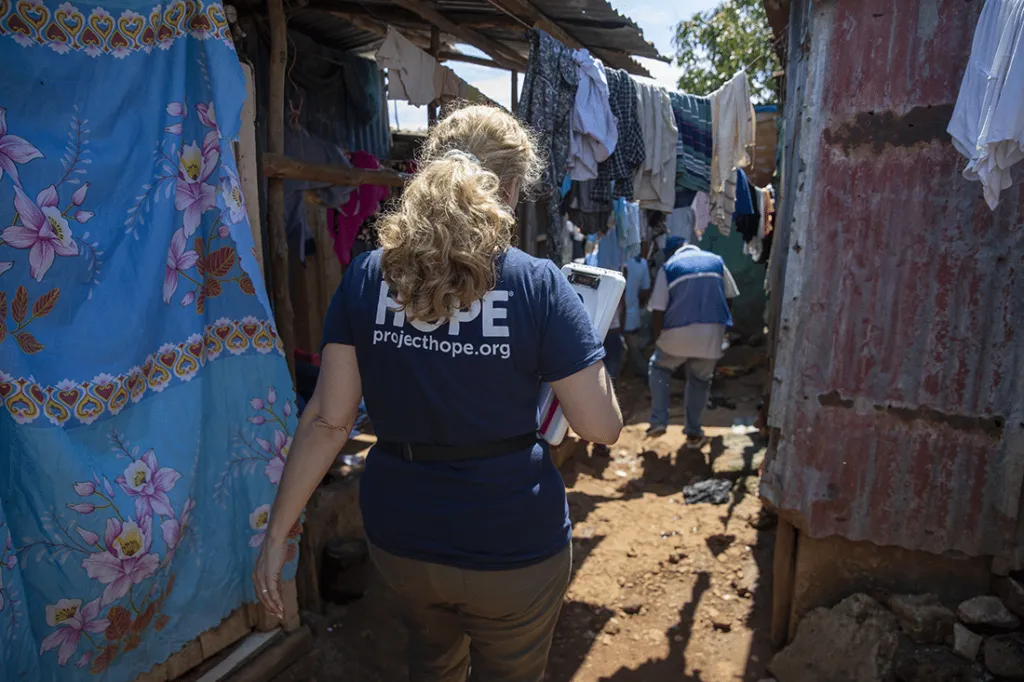
Much of Project HOPE’s work is in the Bo District of Sierra Leone – about a three-hour drive from Freetown, so that’s where our work week started.
As we traveled by car to Bo City, we saw abandoned-looking houses everywhere. Many are grand looking concrete shells. Were they burned out during the civil war? Did people flee during the Ebola crisis? I learned that Sierra Leoneans don’t typically take out mortgages. Instead, they build what they can, as they can. They often run out of money and construction comes to a halt. We were told that maybe they’ll finish in time for their grandchildren to live there.
We visited several villages near Bo City throughout the week. The first order of business in every village was a ceremonial introduction with village chiefs, elders and religious leaders, including at least one imam. One thing I heard again and again is how harmoniously Muslims and Christians live together in Sierra Leone. They marry and joyfully take part in celebrating each other’s holidays.
Following the formal introductions, we walked to the center of each village to see some of Project HOPE’s work in action.
There are approximately 21 mother care support groups that have been facilitated by Project HOPE in Sierra Leone. Each group of about 20 mothers is led by a Project HOPE-trained “lead mother.” Dressed in vibrant colors, they greeted us with enthusiastic singing and dancing. It was an exciting spectacle. Their weekly meetings are a celebration of motherhood and sisterhood, and it was a great introduction to their culture.
Many of the songs include instructional lyrics about pre- and post-natal care. Most of the mothers are illiterate, and even though Project HOPE’s educational printed materials include illustrations, the songs are another method of transferring important lessons about caring for themselves and caring for newborns.
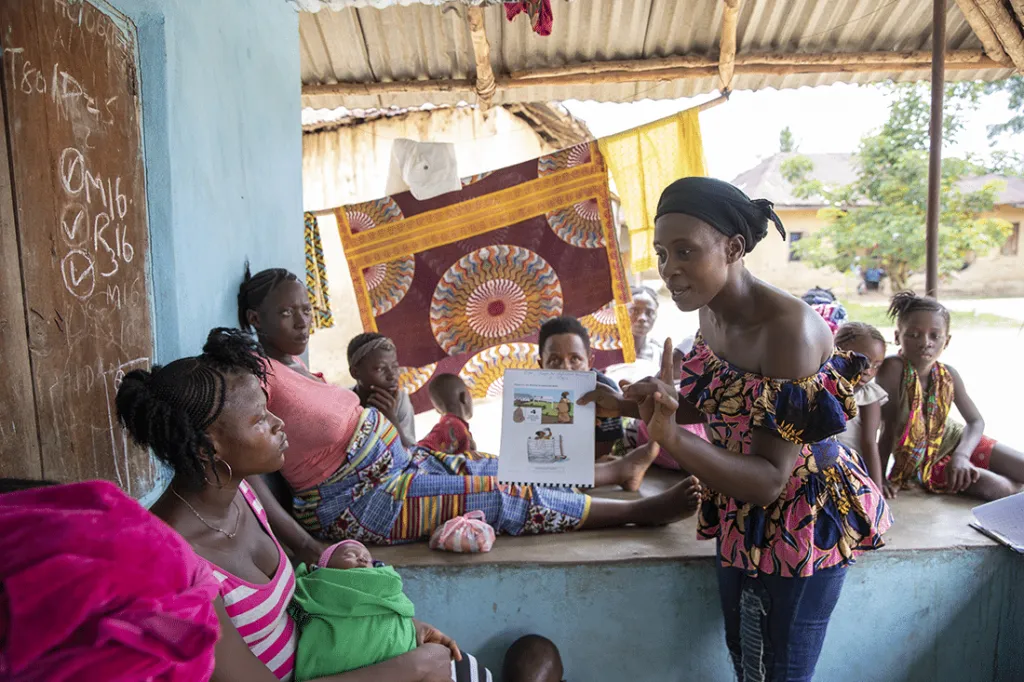
We followed the lead mothers to homes where they offer more specialized attention. The home visits we joined surfaced some interesting misconceptions, including this one:
Although Project HOPE has been successful in teaching the women the importance of exclusive and on-demand breastfeeding, many of the women didn’t realize the importance of colostrum – the first secretion from the breasts after giving birth. Some women were not allowing their babies to drink this – it looks different than the milk that comes later (it’s yellowish and watery) and they didn’t realize how rich it is in protein and antibodies which help their babies’ immune systems. These mothers now know how vital this is to their babies’ health.
The mothers we met are hungry for knowledge and determined to improve the lives of their families. They are a perfect reflection of their country’s beautiful name, Sierra Leone – Lioness Mountains. Their grace and power is leonine, and they protect their young fiercely.
Throughout the week, we also visited some health facilities, including Bo Government Hospital. There we learned how far the maternal and neonatal wing of the hospital has come. The hospital often loses electricity, but thanks to a collaboration between Project HOPE, a donor (Mazzetti/Sextant Foundation) and Sierra Leone’s Ministry of Health and Sanitation, solar panels and batteries were installed in this wing, greatly reducing life-threatening issues due to non-functioning equipment.
This teamwork shows that collaboration is key. From administrators at the Ministry of Health and Sanitation all the way down to the lead mothers in remote villages, HOPE and health care are improving. This is a continuum of care that is saving mothers and babies.
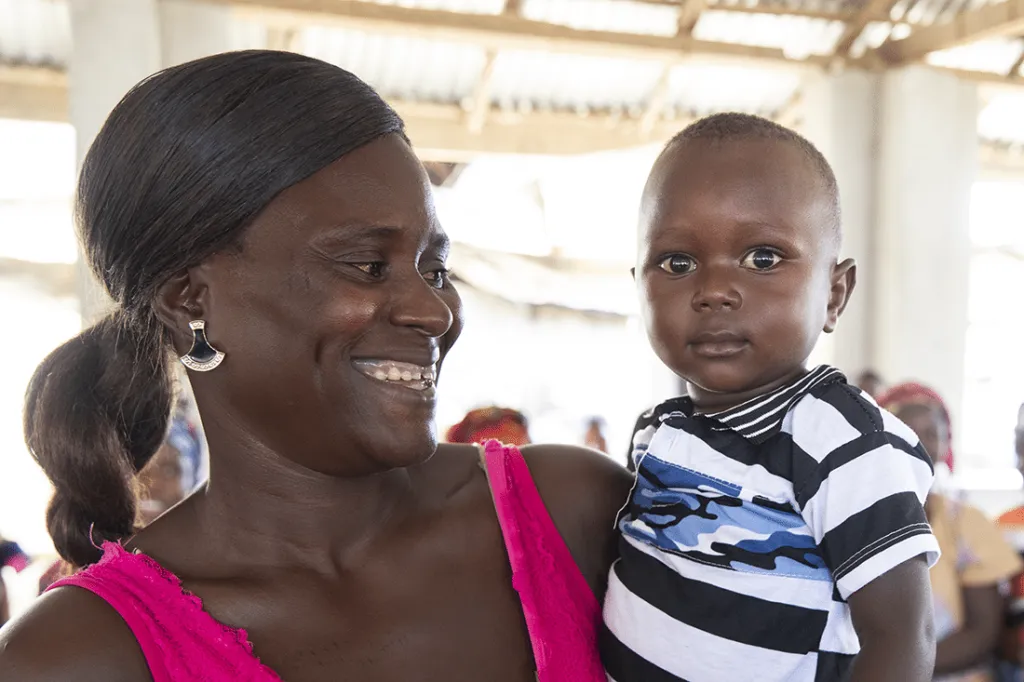
As we returned from Bo back to Freetown preparing for our flight home, we made one last stop – this time visiting an urban fishing village on the coast of Freetown. We talked to many residents and learned about their daily lives. We observed men fixing their fishing boats, a woman making ginger juice, a boy washing clothes.
And of course – something I loved seeing everywhere we went – children hamming it up for the camera. The children in this town were especially outgoing and worked hard to engage us in conversation. They spoke to us in Krio: “Wat ena ya nam?” (What is your name?) Once they learned our names, we were bombarded with photo requests: “Uncle James! Auntie Wendy! Snap me! Snap me!”
By the end of the trip, I was exhausted. I had experienced sweat-soaked work days and ice-cold showers before crashing in the evenings. But I also saw love and joy and felt overwhelmingly warmly welcomed.
These Sierra Leoneans have been through some trying times even in their recent history. A civil war began in 1991, lasted 11 years, and left more than 50,000 people dead. And then in 2014, Sierra Leone suffered an Ebola virus outbreak, killing several thousand.
But Sierra Leone is now at peace and the Ebola outbreak is over.

